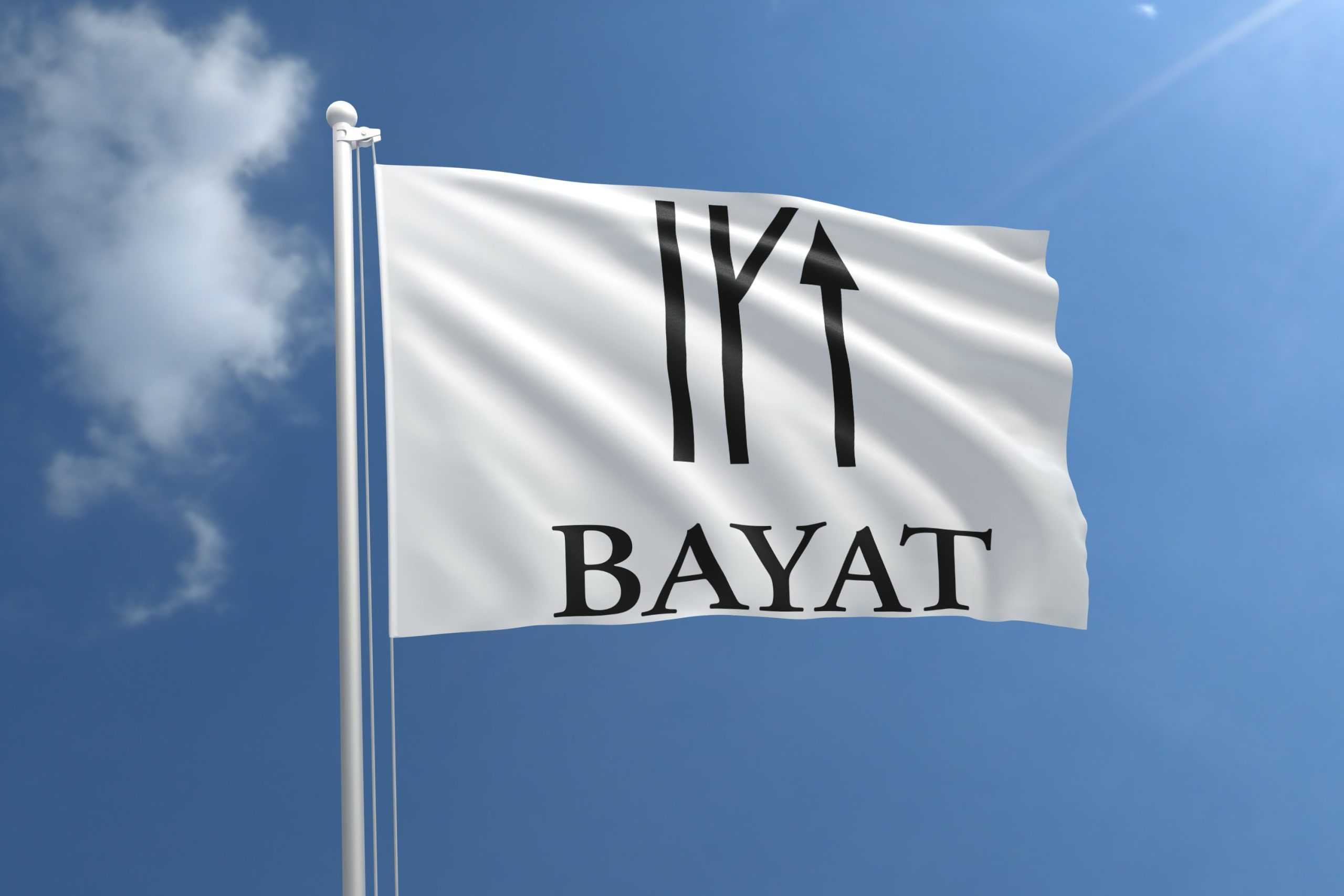
Stale Size
The Bayat tribe is one of the 24 tribes of the Oghuzes according to the Oghuz Kagan Epic and the ninth of the twenty-two Oghuz divisions in Divan-ı Lügati't-Türk according to Kaşgarlı Mahmud; They are "stale". It is an Oghuz tribe defined as Bayat.
It is accepted that this tribe descended from Gün Han, son of Oğuz Kağan from Bozoklar. However, it should also be taken into account that Kaşgarlı placed the Kiniks in the first place in this ranking, which was in the 24th place before it gained power at that time. Except for Kaşgarlı, the general opinion is that Kayıs are in the 1st rank and Bayats are in the 2nd rank.
"Roots in the Past, Innovations in the Future"
- Meanings
- Distributions
- Geographical Distributions
- celebrities
The Great Seljuk State, which adopted political unity and centralism as a goal, settled the immigrants who turned to Anatolia in the 11th century to ensure political unity, while dividing large and powerful tribes and placing them in distant regions. The fact that villages and families bearing the names of the great Oghuz tribes such as Kınık, Avşar, Bayındır, Salur, Bayat, Çepni are encountered in different parts of Anatolia today is a result of these "settlement by fragmentation" policies of the Seljuks.
in Anatolia
Today, names such as Bayat, Bayatlar, Bayatlı appear as thirty-two[10] place names, mostly in western Anatolia. The real name of Afyonkarahisar Yozgat province is Bozok province. In addition, Bozok Plateau, which is called by the same name, is located within the borders of the province. There are many villages with the exact names of Oghuz tribes in Boğazlıyan district. The name of Bayat village in Osmanpaşa Town Bayat, Ankara Bala Küçükbayat and Çorum's Bayat districts, Bayat in Bolu and Gölpazarı in Bilecik district is related to this tribe. In addition, in the city center of Adana, in the district of Hekimhan in Malatya, Hacılar and dereköy, Şambayadı is a neighborhood with a population of 6500, connected to the Çukurova district of Adana province. He lives in Kırıkkale, Urfa and Elazığ provinces. Köseli village in Diyarbakır's Bismil district is also a settlement formed by Bayat Turkmens. Some of them settled in the town of Şambayat (Şambayası) in Adıyaman. A large part of them settled in the province of Izmir, around Narlıdere. Niğde Altunhisar Bayat bay is located. The largest population lives around Konya/Ereglisi. These people who call themselves Bekdiks today are the remnants of the Dulkadirli population. During the reign of Murad IV, they were immigrated from Maraş and Elbistan regions to this region. Even today, elements of classical Turkmen and steppe life are frequently encountered in the lives of these people. In addition, the origin of some villages of Kayseri Akkışla district and Gömürgen town Akkışla district is based on the Oghuzs from the stale tribe. More than half of the population of Kayseri pilgrims come from the stale tribe.
Nevsehir Families from the stale tribe live in (Kozaklı district) and Hacıbektaş District Büyükkışla Village and (Avanos District İğdelikışla village and Kuyulukışla Village) regions. The Elbeys, one of the largest tribes of the Bayat tribe, live in Sivas, Kilis, Gaziantep, Aleppo and Raqqa regions.
Kirikkale The Pehlivanlı Tribe, living in the town and center of Baliseyh, constitutes one of the largest tribes of the Bayat tribe. In the hands of the family, pedigrees that go back 18 generations are available in their original form. Many books have been written in the light of the researches. Detailed information can be found in the Oghuz book, as well as from the research conducted by Baki Yaşa Altınok at Gazi University.
in Afghanistan
Today, people from the Bayat tribe live in Kabul, Mazar-i Sharif and other small villages and towns in Afghanistan.
in Iraq
Today, people from the Bayat tribe live in Erbil, Kirkuk, Mosul and other small villages and towns in Iraq.
in Iran
In modern-day Iran it also appears in place names as Bayat, Bayatan, Bayatlu, Bayatlar, these are near Arak and Zanjan, near Urmia (Reżāʾīya), Dasht-e Mishan in Khuzestan, near Borujerd, and near Daragaz in Khorasan. The total strength of the Bayats in Iran is estimated at 40,000 families.The Dulkadir (Zulqedr) tribe is also a sub-branch of the Bayat in Iran's gulestan (Minudesht) and Fars provinces.
in Azerbaijan
In six regions of Azerbaijan (Ağcabedi, Devechi, Neftchala, Shamakhi and Ucar districts and Ahmetli Town of Baku).
Others
There are four settlements in Turkmenistan and one in Uzbekistan near the Turkmenistan border, Bayat, Bayat-Khadzhi and Bayat-Sindzhap. In addition, it is seen that communities smaller than this size live on the Amudarya in northern Syria and Turkmenistan.
superfluous
Dede Korkut
Uzeyir Hajibeyov


